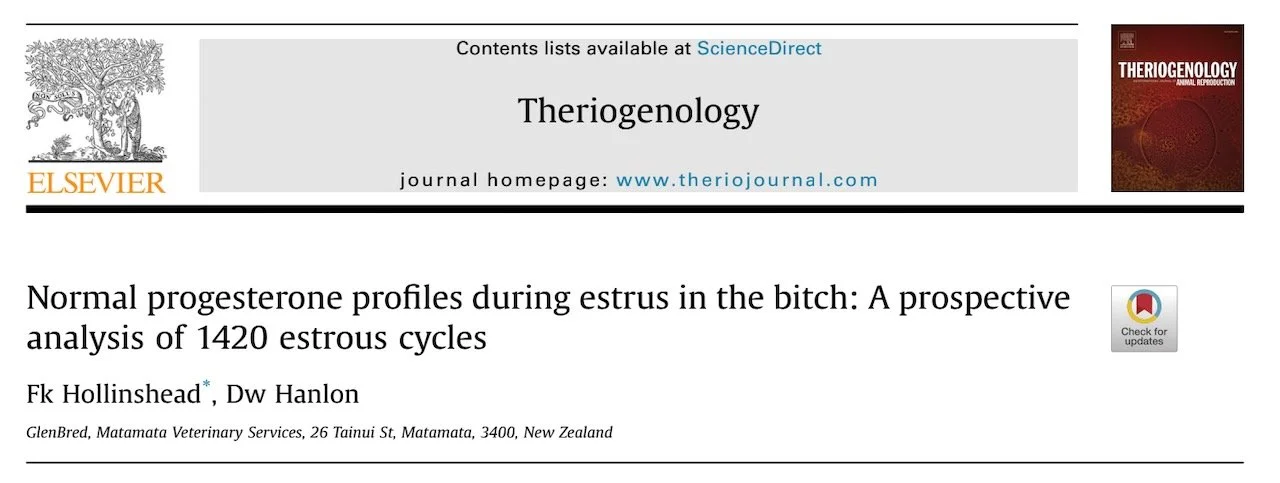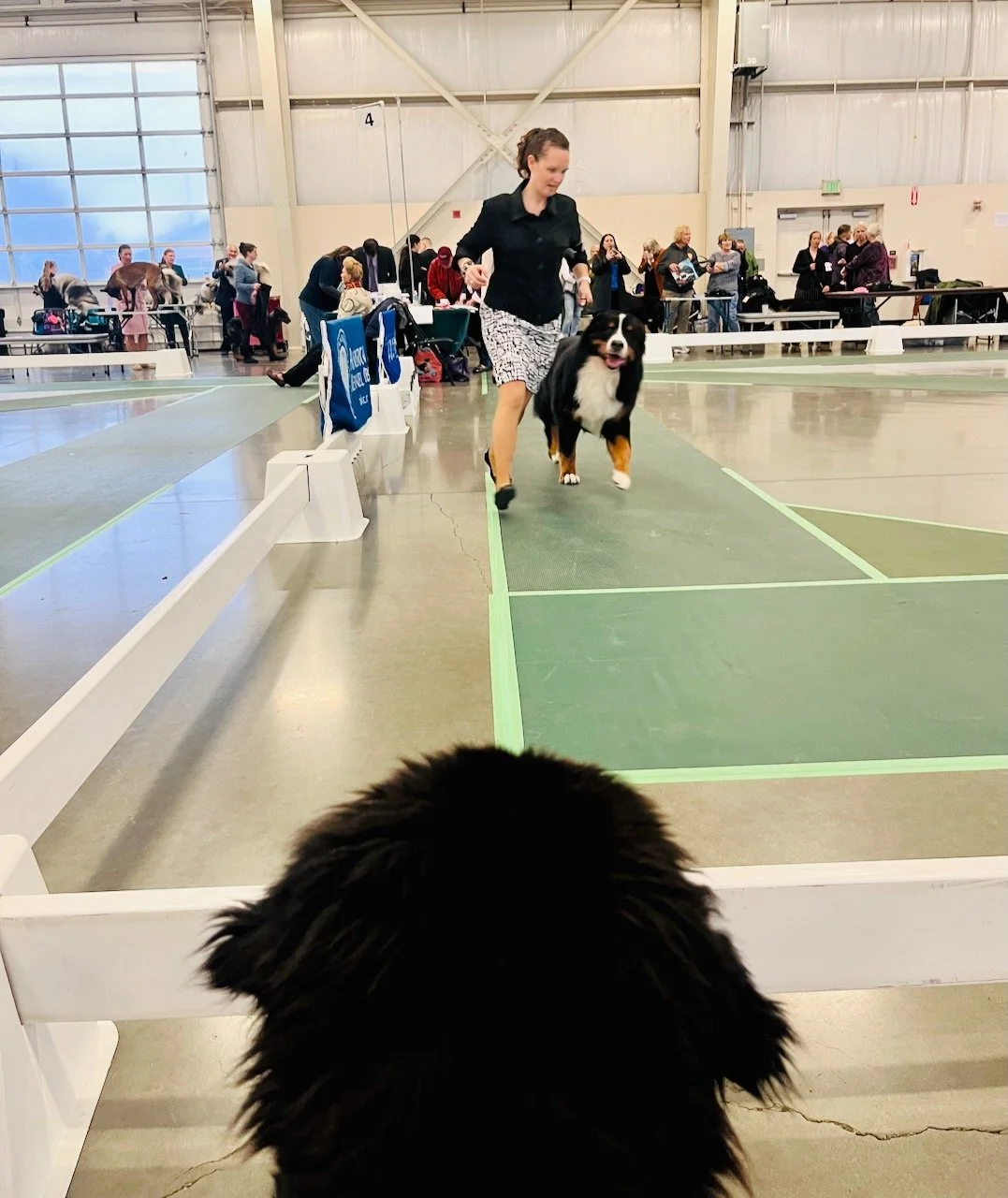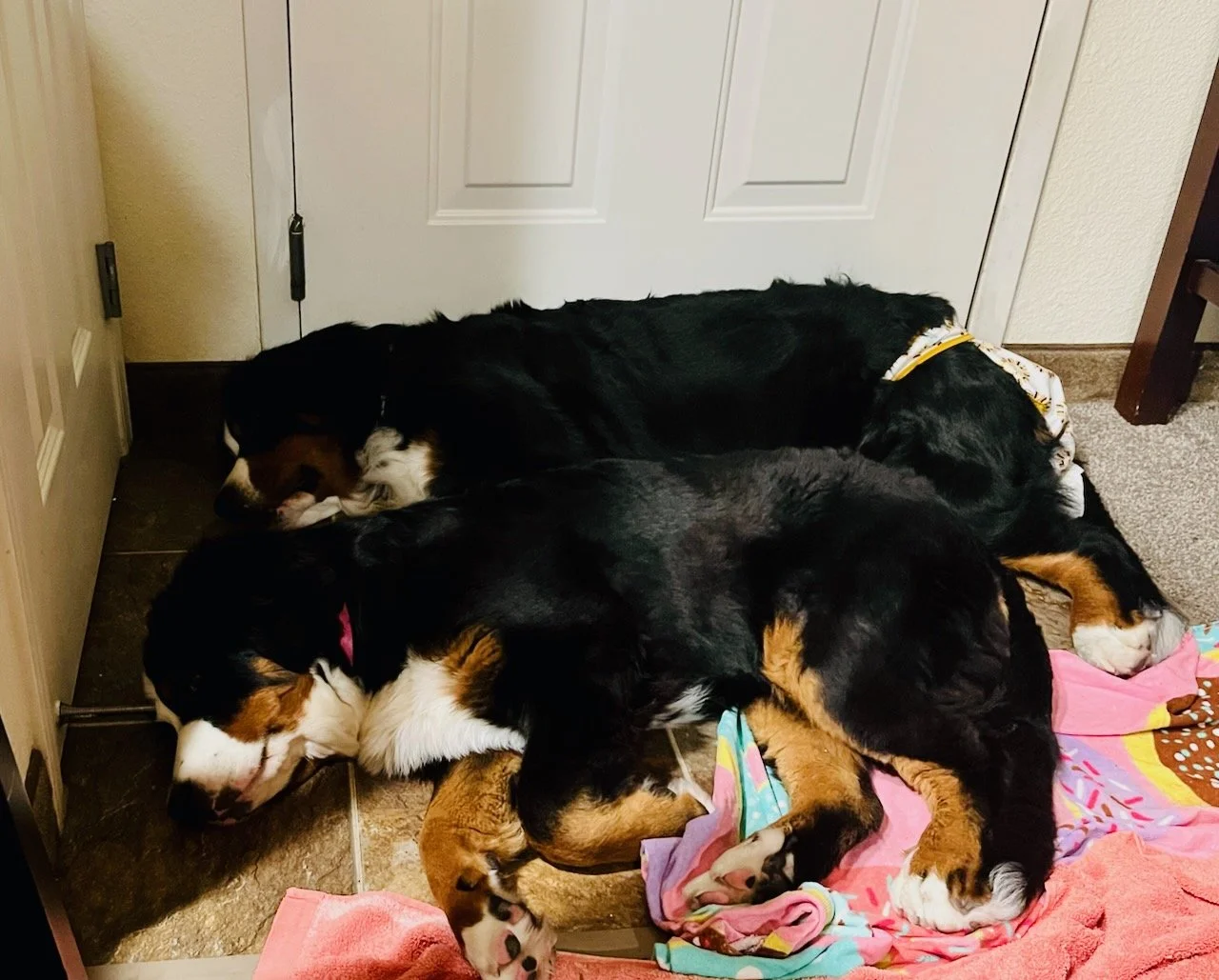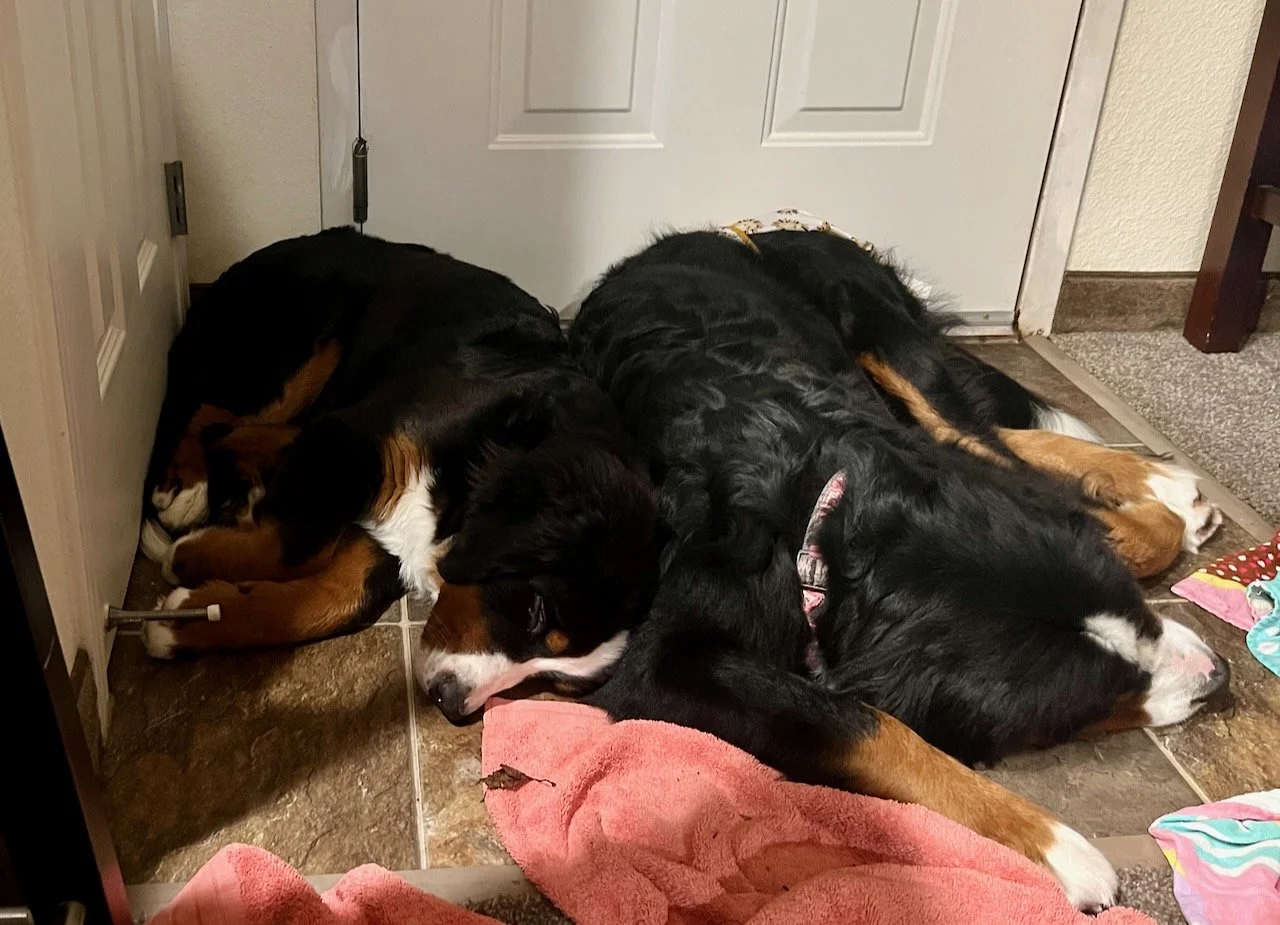In order to pinpoint the best days to breed a dog, we test progesterone. Measuring progesterone is a proxy for the luteinizing hormone (LH). That is the hormone that triggers ovulation but it is not practical or cheap to measure LH in dogs, and so we measure progesterone — that is relatively easy.
Opinions differ about what progesterone value signals the best breeding dates. You will hear, “ovulation happens at 5 and then start breeding two days later.” This delay is because eggs take a day or two to "ripen” in dogs, and cannot be fertilized before that.
But a New Zealand study of over 1400 dogs found that progesterone at estimated ovulation was a range rather than a fixed point, and that range starts at a lower value than five.
Many years ago, I read the work of Patrick Concannon. I even called him once to clarify the information about breeding timing he offered in his published work — he was a very kind man.
The breeding clock in his work begins the day LH surges — that is Day 0 or LH0 and we count the days from there. He describes LH0 as follows:
“On the day of the LH surge, serum progesterone increases abruptly, i.e., at a rate greater than over the previous 2-3 days. The increase may be from 0.4 to 0.8 ng/ml, from 0.7 to 1.2 ng/ml, or from 0.8 to 2, 3 or more ng/ml. Neither the magnitude of the increase, nor level attained, is predicable, consistent or diagnostic. However, an increase in progesterone of some magnitude occurs consistently, and is almost always followed by a further increase on one or both of the next two days.” (SOURCE)
Ovulation, which takes place over several hours, can begin as soon as 38 hours after the surge (LH2) and so eggs can potentially begin to be fertilized by LH3.
We know sperm can live quite a while, and so it does not hurt to have them hanging out and waiting for eggs. BUT the eggs are not as hardy and may only be viable for a day or two. We cannot, therefore, let eggs hang out waiting for the sperm to slog their way to the rendezvous.
My experience is that breeding based on an ovulation value of five (plus two days) risks late breedings.
I prefer to use Concannon’s work to time breedings, which means I start the clock at LH0. I keep testing to confirm ovulation but I do not base breedings on ovulation numbers/date — I stick to the timing LH0 offers, which can be different (earlier) than suggested based on ovulation.
Concannon, in that same article noted above, offers that natural breedings, “with most bitches and males of reasonable fertility, mating anytime between 2 and 5 days after the LH surge (1-4 d post ovulation) should be satisfactory, especially if there is a repeat mating 1-2 days later.”
Capella was bred on LH3 and LH4 to a male who is unrelated to the father of her previous litter. Perfect timing per Concannon’s work.
While we were hanging out between breedings, Starry G got to watch her dad, Deuce, take Best of Opposite in Veterans Sweeps.
Starry got to meet so many new people at the show — children are her favorite. She also got to hang out in a nice hotel room for two nights.
On the way home we stopped to track and then play with Tommy Topaz and discovered it is best not to let Starry G loose with feathered friends — one chicken now has a few less feathers 😬 (but is reportedly just fine).
The scene of the crime.
Pozy was happy at home with her favorite dog/cat/house sitter.
And now we wait 🍀🙏🤞🏼
Happy Sunday ❤️




